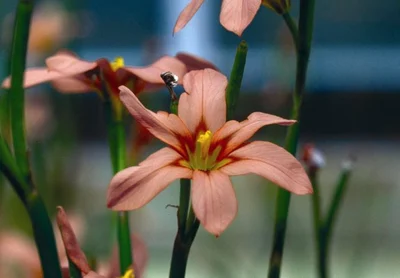Warning about plant pest

Farmers and gardeners in Mid Canterbury are being asked to lookout for a highly toxic plant after the pest species was found in a garden not far from the district's borders.
The Cape Tulip, native to South Africa, was recognised as a noxious plant in New Zealand in 1978 with more than 500 sites confirmed since early 1980s.
Biosecurity New Zealand pest manager John Sanson said than 230 of the sites were in Canterbury, mostly in home gardens - and included some sites in the Ashburton District back in the 1980s.
Eradication had been very successful with only 29 known Cape Tulip sites remaining, ten of which are the Marlborough Sounds, he said.
The renewed call for people to look out for the toxic weed comes after three plants were found in a Canterbury garden, along with the possibility there could be unknown clusters.
Despite its pretty appearance, the Cape Tulip is a highly toxic, non-native plant - and dangerous to both humans and livestock.
Biosecurity wanted to raise awareness because gardeners were known to pass them on to friends because of the plants’ pretty flowers.
“Every part of this plant, whether fresh or dried, contains poisonous compounds.”
There was a significant risk of it spreading throughout New Zealand due to its long-lasting corms, which can persist through several growing seasons, Sanson said.
For people, handling the plant could cause skin irritation. If ingested – if accidently mixed with food, for example – humans could suffer symptoms of poisoning.
Symptoms of Cape Tulip poisoning include gastroenteritis, thirst, paralysis, blindness, and heart and kidney failure.
Stock could die from eating the plant. While animals would need to eat about one kilogram of the plant – this was possible, and a reality in Australia.
Sanson said the Cape Tulip had been known to escape from gardens to neighbouring pasture - and establishment in agricultural areas could result in significant economic consequences.
The plant is both a notifiable organism and an unwanted organism under the Biosecurity Act 1993 and is banned from sale, propagation, and distribution.
Cape Tulip plants and flowers can appear between June and December. They grow to 90cm tall and have a single, long strap-like leaf. The flowers are usually salmon-pink with a band of deeper colour near the base of the petals, sometimes with a yellow centre.
If you find a Cape Tulip call Biosecurity New Zealand’s Exotic Pest and Disease freephone 0800 80 99 66. Do not touch the plants or dig them up.
By Sharon Davis

